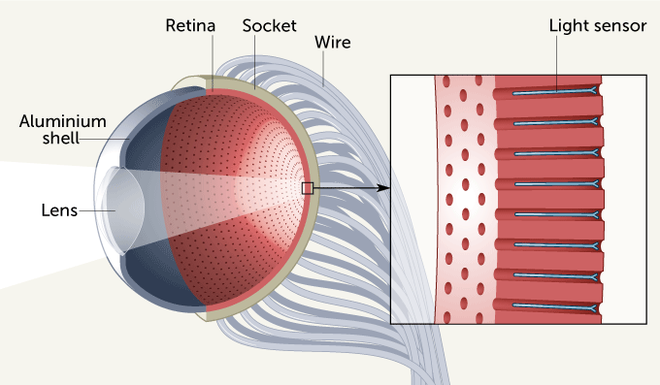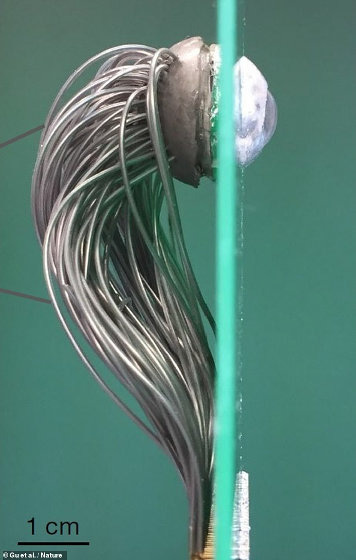An ‘artificial eye’ appears that possesses a reaction speed far beyond the human eye and extremely high resolution
- Tram Ho
Materials scientist Zhiyong Fan and a team of engineers at Hong Kong University of Science and Technology developed an artificial eye based on the structure of the human eye.
Inside the artificial eye, an artificial retina with a nano-sized optical sensor will be responsible for measuring the amount of light transmitted through the lens placed in front of the artificial eye. The wires attached to the back of the artificial retina play the role of the optic nerve in the eye, sending signals that the sensor receives to the external circuit board.
Although the artificial eye does not have a telephoto or night vision function, the team has stated that it can perform better functions than the human eye.

Internal structure of the artificial eye.
Specifically, while humans respond to changes in light at a rapid rate of 40 to 150ms, the artificial eye is able to react faster than this in about 30 to 40ms, even under light conditions. light dim. Another characteristic of the artificial eye is that the artificial retina has the same arch shape as a human retina, but it cannot create the 150-degree visual field that humans possess, instead being only 100 degrees. However, compared to flat image sensors that have a 70-degree field of vision, this has been a huge improvement.
In addition, about 460 million optical sensors are embedded in the artificial retina per square centimeter. Compared to the human eye only about 10 million cells detect light per square centimeter, it is clear that artificial eyes have higher resolution. Fans and colleagues used curved aluminum oxide films to simulate the retina, while the nanosensors were made of light-sensitive material called perovskite.

The number of signal wires will be a difficult problem to solve.
However, at the present time, each wire connected to the back of the retina is 1 mm thick, so only about 100 wires can fit into the back of the artificial retina. The team therefore obtained a 100-pixel image.
To demonstrate that thinner wires can be connected to artificial eyeballs to produce higher resolution images, Fan’s team used a magnetic field to attach a small array of metal wires, with each fiber is 20 to 100 micrometers thick. Its complexity is similar to a surgery.
In the future, however, when a new way to organize a large number of microsecond wires is more efficient, such as in the millions, the results will be impressive. And robots or robots that incorporate this artificial eye in the future, will have superhuman vision, in the view of Hongrui Jiang, an electrical engineer at the University of Wisconsin Madison, who commented on the research.
References Nature
Source : Genk
